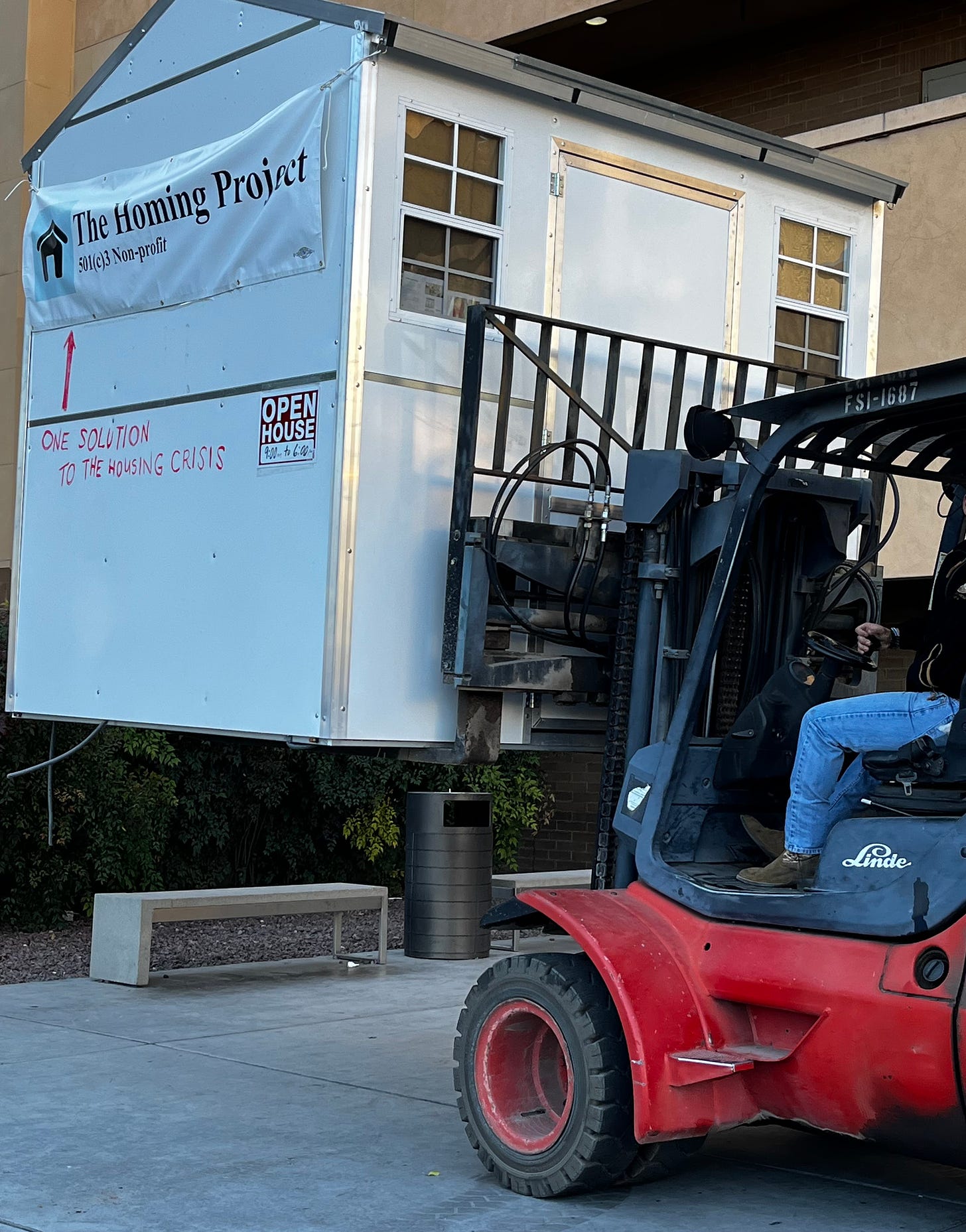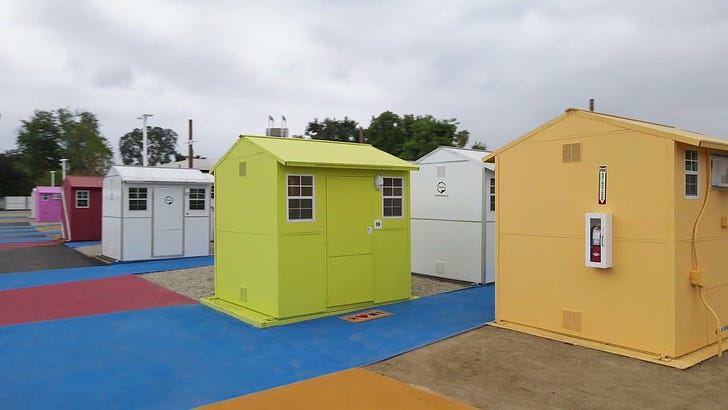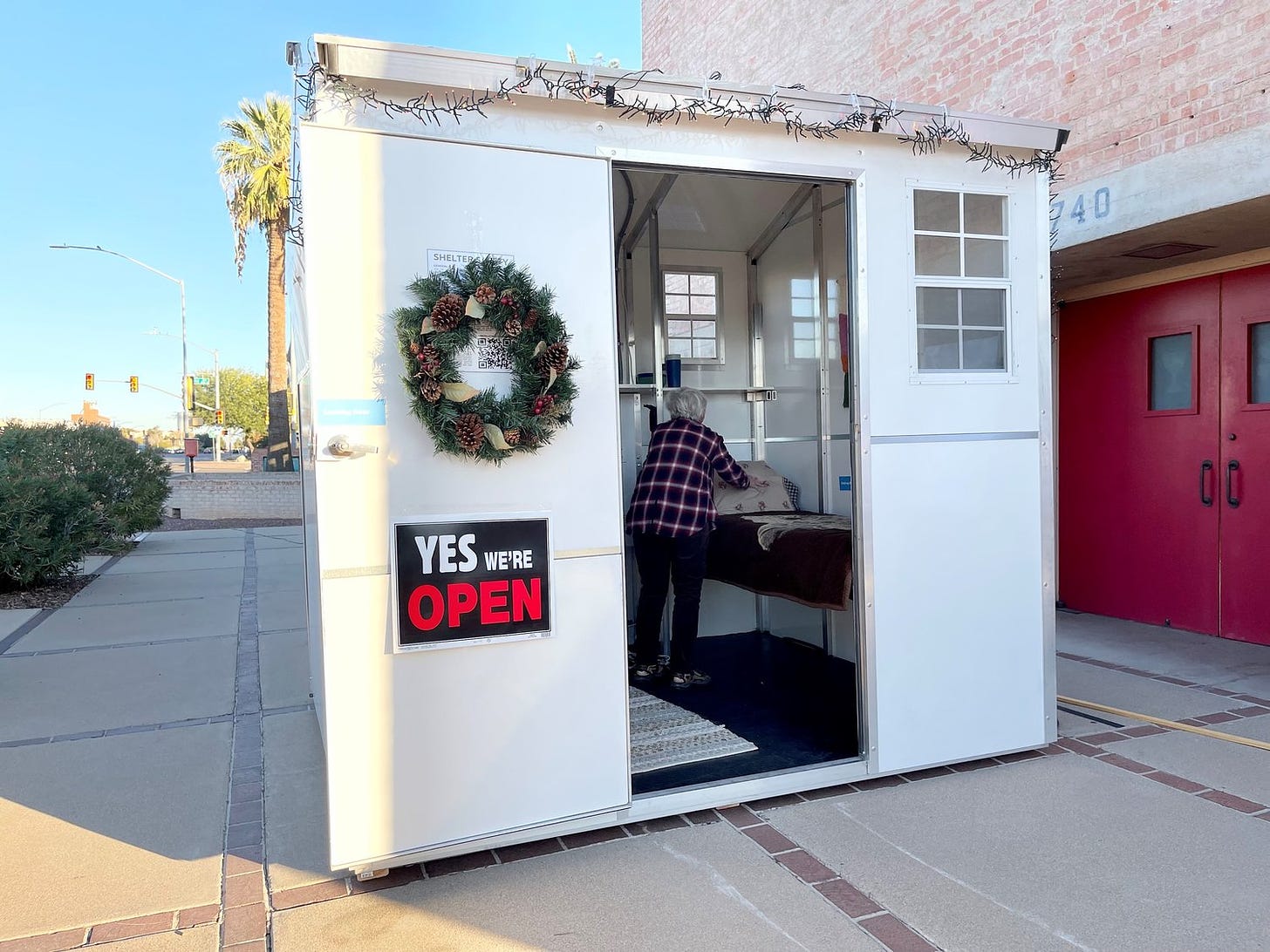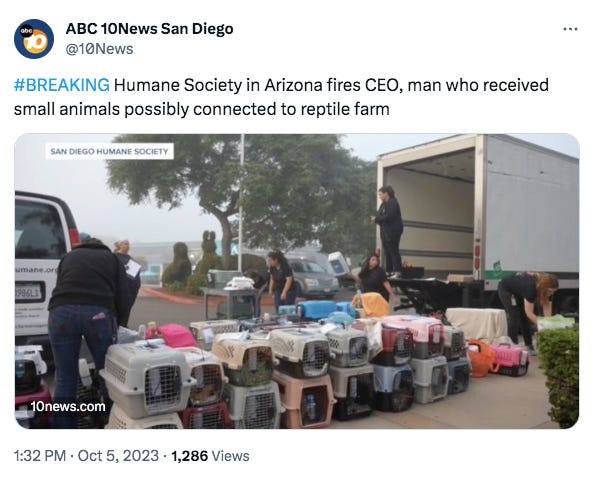The Daily Agenda: A long road to a quick fix
A pallet house can go up in minutes ... But it takes years to actually build one in Tucson ... Lots of housing news today.
Tucson clearly needs more affordable housing and shelter options.
And the demand for immediate solutions is seriously outpacing the timeline for building more housing, especially given the government red tape.
But what if it could be easier? What if there was a way to quickly get people into housing that’s private and secure, both for the people living in them and in the surrounding neighborhoods?
Retired El Rio doctor J. Kristin Olson-Garewal and her son, Raj Garewal, have a plan to do just this, while also providing residents with on-site medical, behavioral health and social support.
They’ve been hard at work in Tucson for two years now, trying to establish the first micro-house village in the region.
The Homing Project started in August 2021 and is based on a model of shelters that’s used in dozens of cities across the U.S., most notably in Southern California.
Pallet houses are prefabricated shelters that are either 64- or 100-square-feet. Originally designed as disaster shelters, the Pallet houses take around 30 minutes to assemble.
The smaller Pallet houses include two beds, which fold up to save space, a desk, storage space, electricity, heating, air conditioning and locking doors. The 64-square-foot house can hold two people and the 100-square-foot model is large enough for a family of four.
Caitlin first wrote about the Homing Project last spring, when organizers had secured funding, but were struggling to find land. Shortly after the article published, a community member offered up nine acres of land in Ward 5, free of charge for the next five years.
If only it were that simple.
Neighbors were concerned about another project for unsheltered individuals moving in, and the property posed other challenges including entitlements, building restrictions, fire code and water access.

While the Homing Project still has a lease on the property, the plans to use it for a micro-house village are on hold.
But the group kept plugging away, and in the months since, it has acquired two additional pieces of property.
The second site, located in South Tucson, is too small for the group’s planned 30-house village, so it will be used as a demonstration project.
“We’re going to have 15 houses with all the bells and whistles and show the positive impact it has on the neighborhood, rather than a negative one,” Olson-Garewal said earlier this week.
Olson-Garewal said the nearby neighborhood association is in full support of the project, a welcome change from the site in Ward 5.
“We feel like we stepped into some kind of warp,” she said with a laugh.
They also have the support of South Tucson City Council members and Casa Maria Soup Kitchen workers Brian Flagg and Roxy Valenzuela, who both sit on the Homing Project’s board.
Casa Maria is also working to address housing inequity in South Tucson, with its recent purchase of two motels that will be used for affordable housing.
The third piece of land, which just recently fell into place, is showing the most promise, especially since it comes with built-in support.
The property is owned by Southern Arizona Land Trust and will be available for the Homing Project to borrow for the next few years. Olson-Garewal is working with the land trust, neighborhood association and the city’s Development Services Department to move the project forward.
The group still has to do some work on the land to install utilities and create an infrastructure for solar energy, but they have the assistance of the land trust’s general contractor and civil engineer to help secure the necessary permits.
The group has Pallet houses on order, with fundraising for the first site ongoing, but the absence of a concrete timeline for the project has been a barrier when it comes to applying for any big grants.
Olson-Garewal is hopeful that the third time is the charm and this most recent site will allow them to not only set a timeline, but open the doors on their micro-house village.
While we appreciate the work that the city and other groups are doing to create more permanent and traditional affordable housing options, the majority of the construction and retrofitting projects they’re taking on aren’t quick fixes.
The Homing Project’s plan sounds like a much faster way to get people off of the streets and into stable, secure transitional housing. Yet more than two years after the project’s launch, the group is still jumping through hoops to make this dream a reality.
But hey, what’s life in America without a little — or a lot — of red tape?
Eviction fallout: City officials and tenant advocates had a dustup at a Tucson City Council meeting over evictions at the Ocotillo Apartments and Hotel, the Arizona Daily Star’s Nicole Ludden reports. Roughly 200 people were caught up in a sober living home scheme and ended up without a home. City officials said they put a lot of resources into helping them, but advocates misled tenants about how to handle the evictions. For their part, advocates said they felt abandoned by the city.
“You all spoke very vehemently about the extensive coalition that was brought together to address the issues at Ocotillo,” said Luke Menke, who said he listened to the study session conversation beforehand. “But at no point in that session was it addressed whether, through all of this, a cost analysis was done of displacing the vulnerable individuals at Ocotillo compared to just paying the bill and bringing in agencies to get them the services that they needed.”
Out in the street: The Arizona Luminaria’s Carolina Cuellar talks with former Ocotillo residents who were forced to live in encampments outside the Ocotillo building during record-setting heat after they were evicted.
Then and now: The City of Tucson is asking residents to share historical photos of Tucson House as the city plans to use a $50 million federal grant to upgrade it. The building opened as a 17-story apartment complex in 1963 “as the pinnacle of luxury living in Tucson.”
The saga continues: The controversy over 250 small animals that went missing after they were transferred from San Diego to Tucson led the Humane Society of Southern Arizona to fire CEO Steve Farley and accept the resignation of Chief Program Officer Christian Gonzalez, Arizona Public Media’s Danyelle Khmara reports. Meanwhile, the San Diego Humane Society is planning to hire a private investigator to look into what happened with the transfer to Tucson, the San Diego Union-Tribune’s Emily Alvarenga reports.
Water rights: A development that would have added nearly 7,000 homes to the Sierra Vista area won’t be built, now that the San Pedro River has more federal protections, Arizona Public Media’s Summer Horn reports. The developer, Castle and Cooke, had planned the project for two decades, but decided to pull the plug after a federal judge added protections to the river in August.
Bidding starts soon: You can buy one of the shipping containers former Gov. Doug Ducey’s administration placed on the Arizona-Mexico border. They were eventually taken down. Starting Oct. 16 anybody can participate in an online auction to buy them, Capitol Media Services’ Howard Fischer reports. The starting bid is $2,000.
8.3: The percent of housing unit growth in Arizona from 2010 to 2020, according to an article In Arizona’s Economy, an online magazine published by the University of Arizona’s Eller College of Business Management.









https://housinginnovation.co/deal/the-chandler-blvd-tiny-home-village/ This is the pallet home village in so cal. Folks receive services, food, and security. It is well managed and is not a blight on the community.
Wow! The pallet homes seem like a step in the right direction! Hopefully their placement gets moving forward quickly